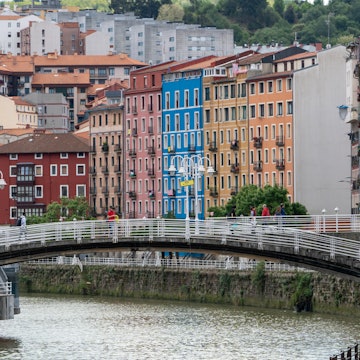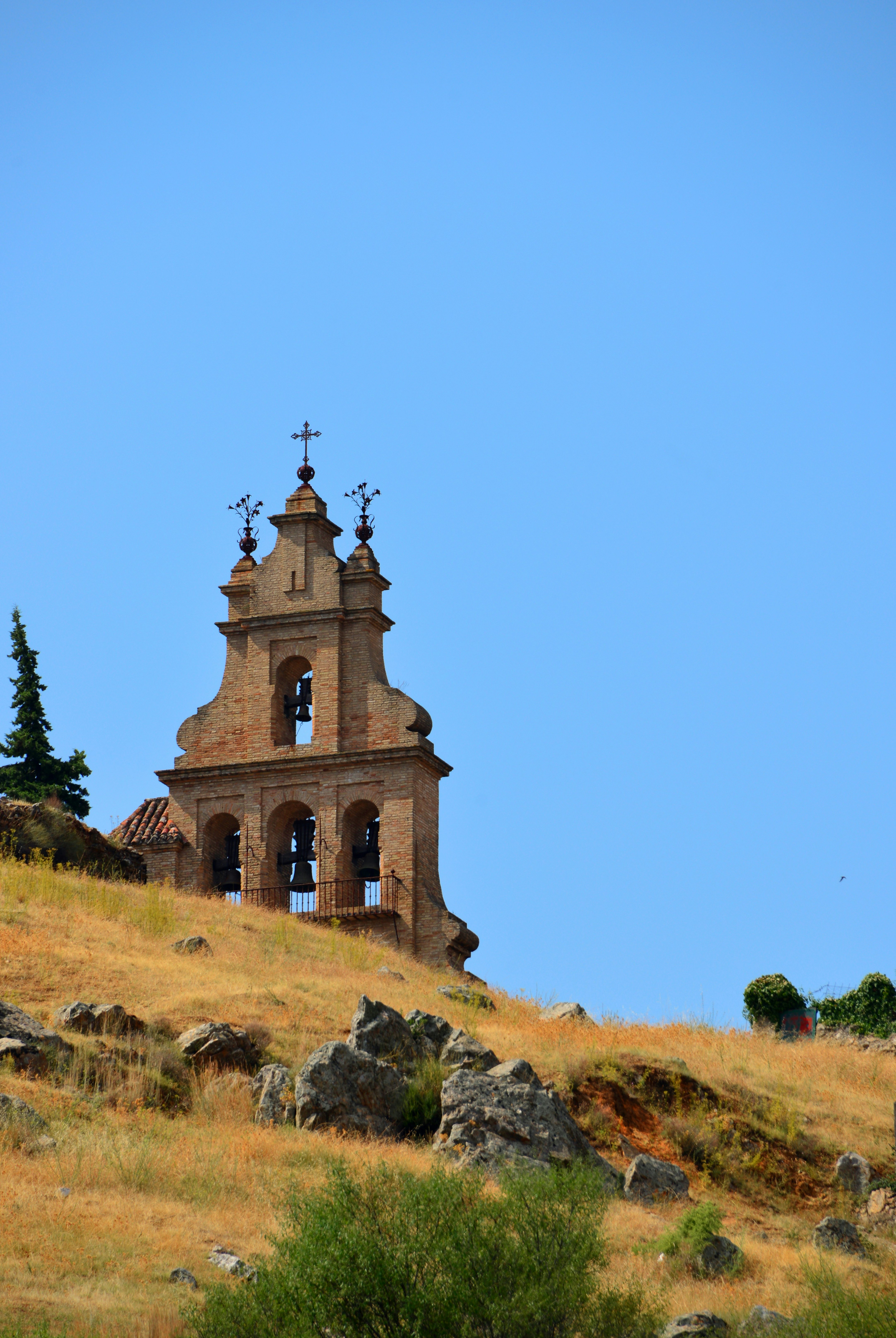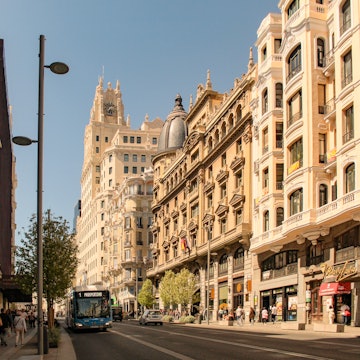

Early spring flowers on the stark Cabo de Gata coastline, Parque Natural de Cabo de Gata-Níjar © John Noble / Lonely Planet
Andalucía, Spain's southernmost region, is famous for sunshine, the Alhambra, flamenco, beaches and fiestas. Less well known is that it’s also a paradise for nature lovers. Beyond the cities and beach towns stretch high, rugged mountains, rolling green hills and deep river valleys, with a spectrum of wildlife from ibex and lynx to some of Europe's biggest birds.
Whether you like to hike, cycle or kayak your way through nature, or you simply love being in a beautiful landscape, Andalucía's superb network of visitor-friendly national parks (parques nacionales) and natural parks (parques naturales) never fails to excite.

Sierras de Cazorla, Segura y Las Villas
Spain's biggest protected area at 2099 sq km, the Sierras de Cazorla natural park in northeastern Andalucía, north of Jaén, boasts spectacular mountain and valley scenery, castle-crowned hill villages and abundant wildlife. The most popular of many walks takes you up the Río Borosa through scenery that progresses from the pretty to the majestic, via a gorge and two tunnels, to a beautiful mountain lake (about 11km each way; seven hours there and back).
You can tour large areas of the park by road, but it's also easy to get far, far away from the sound of motor engines. Red and fallow deer are common, and walkers stand a good chance of spotting ibex, wild boar, red squirrels and mouflon (wild sheep). Several types of eagle and vulture circle the skies, and you might even glimpse the enormous and very rare lammergeier (bearded vulture), which is being reintroduced here after disappearing from the area in the 1980s. The picturesque old town of Cazorla is the park's appealing main gateway, but try not to miss Segura de la Sierra, atop its high hill surmounted by a medieval castle.
Where to stay
Casa Rural Los Parrales is a chilled-out base with excellent meals, cosy rooms and wonderful views along the Tranco reservoir from its terraced garden (with a pool); it's 3km north of Tranco village.
Doñana
This ethereally beautiful expanse of water, dunes, woodlands and beach in the delta of the Río Guadalquivir is one of Europe's biggest wetlands. It's a vital refuge for half a million migratory birds including spectacular flamingos, storks, spoonbills and bee-eaters, and such highly endangered creatures as the Iberian lynx and Spanish imperial eagle. Doñana is actually two parks: a 542 sq km parque nacional with the buffer of a surrounding 538 sq km parque natural. El Rocío village, with marvellous panoramas over the wetlands and their wildlife, is the main visitor base. It's also the focus of Spain's biggest religious festival, the Romería del Rocío, every Pentecost (Whitsun) weekend, when up to a million festive pilgrims converge here.
The best way to visit the parks (indeed the only way to visit the national park) is on tours in all-terrain vehicles with operators such as Cooperativa Marismas del Rocío, Doñana Reservas or Doñana Nature. For national park visits from about April to August and on holiday weekends, book at least a month ahead. Chances of seeing a lynx or imperial eagle are admittedly low, but you should spy plenty of deer, wild boar and other birdlife, and you can enjoy live video of lynxes at the El Acebuche visitors' centre.
Where to stay
Hotel Toruño in El Rocío is a villa hotel with a wildlife theme and a great restaurant, standing right beside the wetlands.

Sierra Nevada
The Sierra Nevada's mighty wall of high peaks provides a stunning, snow-capped backdrop to Granada's fabled Alhambra palace. Tallest of all in the 75km-long range is Mulhacén – mainland Spain's highest peak at 3479m and a summit that's not too hard to bag thanks to the national park's minibus services, which run from June to October. The minibus from Capileira village carries walkers up to an altitude of some 2700m, about three hours' walk from the summit.
The Parque Nacional Sierra Nevada, occupying the range's upper elevations, is home to more than 2000 plant species and several thousand ibex. The Parque Natural Sierra Nevada covers the lower altitudes. On the range's south side lies the beautiful string of valleys known as Las Alpujarras, where picturesque white villages perch on the brink of deep, tree-lined ravines. The Alpujarras' innumerable fine walking routes are best trodden from April to mid-June and mid-September to early November, when temperatures are just right. There are plenty of winding roads, too, for those who prefer to tour in a more leisurely fashion.
Where to stay
Hotel Real de Poqueira in Capileira is a gorgeous makeover of an ancient house in one of Spain's highest villages.

Cabo de Gata-Níjar
In the searing heat of high summer, it makes sense to head for the coast. The Parque Natural Cabo de Gata-Níjar stretches around 70km of dramatic shoreline, where high volcanic headlands loom between some of Andalucía's finest, but least crowded, sandy beaches. Besides splashing and sunbathing, kids and adults alike can enjoy boat rides with operators like El Cabo a Fondo, kayaking or SUP (stand-up paddle) with outfits such as MedialunAventura, and snorkelling and diving in some of the Mediterranean's most pristine waters. There are dive centres in half a dozen of the park's villages, including San José and La Isleta del Moro. In spring and autumn, there's great walking along coastal trails here too.
Where to stay
In San José, MC San José is a stylish, family-run hotel in the park's centre of action.

Sierra de Aracena y Picos de Aroche
The little-known Sierra de Aracena y Picos de Aroche parque natural is an absolute gem of rolling green hill country dotted with old stone villages and imposing castles. Woodlands alternate with expanses of dehesa (evergreen oak pastures) and the well-maintained walking trails, with ever-changing vistas and mostly gentle slopes, make for some of the most delightful rambling in Andalucía. Round off days of hiking with terrific country meals in which the region's famed jamón ibérico (ham from the Iberian pig) and wild mushrooms feature strongly. Jesús Carrión restaurant in Aracena puts an innovative twist on these staples: try its Iberian ham carpaccio or boletus-mushroom risotto.
Where to stay
Finca La Fronda in Alájar is a luxurious country house tucked away in cork and chestnut forest.

Sierra de Grazalema
Tall green peaks rise abruptly from the plains of Cádiz province to form the small but gorgeously scenic and surprisingly rugged Sierra de Grazalema natural park. Drive over the nerve-jangling Puerto de las Palomas, pass between the pretty white villages of Grazalema and Zahara de la Sierra. In summer, cool off in local village pools, join Horizon for canyoning, paragliding, kayaking, via ferrata climbs or the Garganta Verde gorge walk (2.5km each way; total time about 2½ hours), where you can hear the wind ruffle the feathers of huge griffon vultures as they swoop past you at eye level.
Where to stay
La Mejorana in Grazalema is a welcoming village house with colourful neo-rustic rooms, a panoramic breakfast terrace and hammock-strung garden.
Make the most of your travel with sightseeing tours and activities from our trusted partners.
https://shop.lonelyplanet.com/products/andalucia-travel-guide-8
















